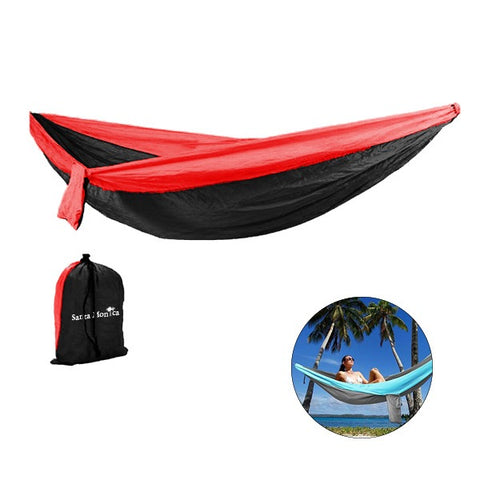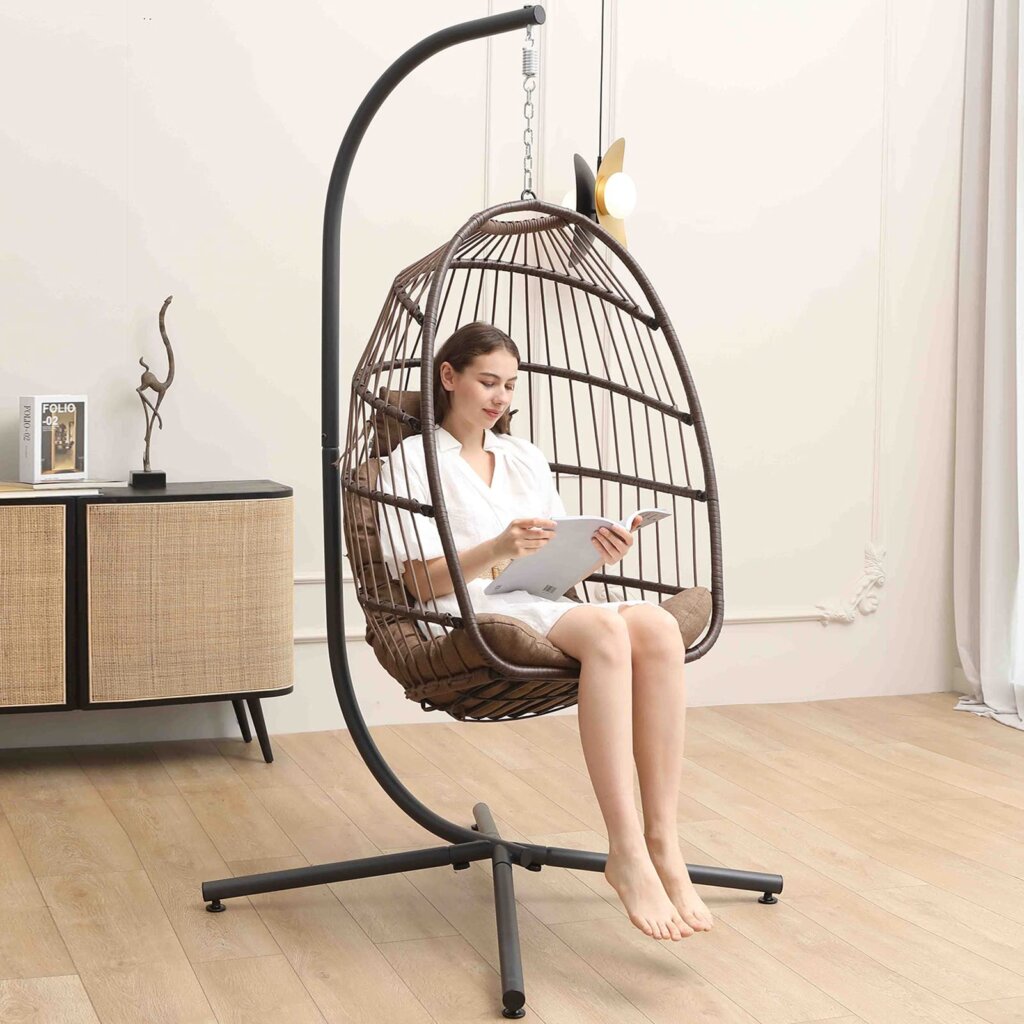- 8 Airplane Footrest Hammock!Travel comfortably - October 9, 2023
- top 7 Pool Float Water Hammock for a Relaxing Summer - October 9, 2023
- top 5 Space SaverSingle Hammock Stand Maximize Comfort and Space - October 9, 2023
To hang a hammock on a boat, the best location is typically under the boom. Gravity helps to keep you stable while the boat rocks.
1. Hanging A Hammock Under The Boom
When it comes to hanging a hammock on a boat, finding the right spot is crucial for maximum comfort and safety. One popular option is to hang the hammock under the boom. This not only provides a cozy spot to relax but also ensures stability while on the water. In this section, we will discuss the key considerations to follow when hanging a hammock under the boom.
Positioning The Hammock Securely
In order to hang a hammock under the boom securely, it is important to choose a strong attachment point. Look for a sturdy beam or support structure located near the boom. This will help ensure that the hammock stays in place even while the boat is in motion.
Additionally, make sure to position the hammock at a height that is comfortable for you. Take into account your own preferences and the space available on the boat. Ideally, the hammock should be low enough to easily get in and out of, but high enough to avoid any obstructions.
Ensuring Proper Weight Distribution
A crucial aspect of hanging a hammock under the boom is ensuring proper weight distribution. Uneven weight distribution can lead to an unstable hammock and increase the risk of accidents or damage to the boat.
One way to achieve proper weight distribution is to lie diagonally in the hammock, rather than straight across. This helps distribute your weight more evenly, reducing strain on the hammock and its attachment points.
Moreover, be mindful of the maximum weight capacity of your hammock and ensure it is suitable for your body weight. Exceeding the weight limit can compromise the integrity of the hammock and potentially lead to a safety hazard.
Securing The Hammock To Prevent Swinging
To prevent excessive swinging while in the hammock, it is important to secure it properly. Use sturdy ropes or straps to tie the ends of the hammock to the attachment points. Make sure the ropes are taut and secure to minimize any unnecessary movement.
Consider using additional supports, such as carabiners or hooks, to further stabilize the hammock. These can be attached to the ends of the hammock and then secured to the attachment points or other fixed structures on the boat.
Lastly, regularly check the ropes and attachments to ensure they are secure throughout your time on the boat. The constant movement and vibrations can cause the hammock to loosen over time, so it is important to periodically tighten the ropes and recheck the attachments.

Credit: www.qualityimprint.com
2. Using The Mast For Hammock Setup
htmlWhen heading out on a boat trip, finding a cozy spot to relax and unwind is essential. One creative way to create a comfortable space is by setting up a hammock. While there are various methods to hang a hammock on a boat, using the mast is a popular choice. In this section, we will explore how to properly set up a hammock using the mast as the anchor point.
Choosing The Right Attachment Points On The Mast
Before setting up your hammock, it is crucial to identify the appropriate attachment points on the mast. Look for sturdy fittings or brackets that can support the weight of the hammock and ensure secure attachment. Avoid attaching the hammock to any fragile or delicate parts of the mast that could potentially be damaged.
Ensuring Stability And Safety
When using the mast as the anchor point for your hammock, stability and safety are paramount. Ensure that the mast is firmly secured and can handle the weight and movement of the hammock. Consider reinforcing the attachment points with additional straps or lines for added stability. Regularly check the attachments throughout your boat trip to ensure they remain secure and intact.
Adjusting The Height And Tension Of The Hammock
To create the perfect resting spot, it is important to adjust the height and tension of the hammock. Start by securing the hammock at a comfortable height, ensuring there is enough space between the bottom of the hammock and the boat’s surface. Adjust the tension of the hammock’s suspension lines to achieve a level position and a firm but comfortable feel. Regularly recheck the tension to maintain a safe and enjoyable hammock experience.
By utilizing the mast as the anchor point for your hammock, you can create a relaxing oasis on your boat. Just remember to choose sturdy attachment points, ensure stability and safety, and adjust the height and tension of the hammock for optimal comfort. Now, sit back, sway with the gentle waves, and enjoy your hammock on the open sea!
3. Utilizing A Hammock Stand On The Boat
When it comes to hanging a hammock on a boat, utilizing a hammock stand can provide a stable and convenient option. A hammock stand allows you to enjoy the comfort and relaxation of a hammock without the need for trees or other anchors. In this section, we will explore how to install a portable hammock stand on your boat, selecting a suitable location, and maximizing comfort for the ultimate hammock experience.
Installing A Portable Hammock Stand
Installing a portable hammock stand on your boat is a straightforward process. Here’s how you can do it:
- First, start by assembling the hammock stand according to the manufacturer’s instructions. Most portable stands come with easy-to-follow guides and require no tools for assembly.
- Once your hammock stand is assembled, find a flat and stable surface on the boat. This can be the deck or any other area where the stand can securely sit.
- Place the hammock stand in the selected location, ensuring that it is stable and doesn’t wobble. You can use non-slip pads or rubber feet to prevent any movement.
- Attach the hammock to the stand using the provided hooks or carabiners. Make sure the hammock is properly secured before getting in.
Selecting A Suitable Location On The Boat
Selecting the right location for your hammock stand on the boat is essential for a comfortable and enjoyable experience. Here are a few factors to consider:
- Choose an area with enough space to accommodate the length and width of your hammock. A clear and open space will ensure you have enough room to relax and swing.
- Avoid placing the hammock stand in high-traffic areas or near any potential hazards. You want to create a peaceful and safe environment for hammocking.
- Consider the position of the sun during different times of the day. You may want to place your hammock stand in a shaded area to avoid direct sunlight and excessive heat.
- Take into account the wind direction on the boat. Placing the hammock stand in a spot shielded from strong winds will provide a more comfortable hammocking experience.
Maximizing Comfort And Relaxation
Ensuring maximum comfort and relaxation while hammocking on your boat is crucial. Here are a few tips to help you achieve the ultimate hammocking experience:
- Use a hammock with adjustable straps or suspension systems to easily find the desired level of comfort.
- Add a hammock pillow or cushion to provide extra support for your head and neck.
- Consider hanging a small pocket organizer on the hammock stand to store your essentials, such as a book, sunscreen, or a refreshing drink.
- Adjust the tension of the hammock to your preference. A slightly tighter hammock will provide a firmer and more supportive feel, while a looser hammock allows for a gentle sway.
- Protect yourself from the sun by using a hammock with a built-in sunshade or attaching a sunshade accessory.
4. Attaching A Hammock To The Boat’s Framework
Hanging a hammock on a boat can create a cozy, relaxing spot for you to enjoy the gentle rocking of the waves. One of the key considerations when setting up a hammock on a boat is to ensure that it is securely attached to the boat’s framework. In this section, we will explore how to identify sturdy attachment points on the boat’s structure, and the different methods of using ropes, straps, or carabiners for secure fastening. We will also discuss the importance of maintaining stability and safety while using the hammock.
Identifying Sturdy Attachment Points On The Boat’s Structure
When attaching a hammock to a boat’s framework, it is essential to identify strong and sturdy attachment points. These points should be able to support the weight and movement of the hammock without compromising the safety of the boat or its passengers. Here are a few commonly used attachment points on boats:
- Mast: The mast is often a strong and secure attachment point, especially on sailboats. Make sure to use appropriate rigging techniques to ensure a secure connection.
- Spreader bars: Some boats have spreader bars that can provide stable attachment points for a hammock. These bars are typically located near the mast and can be used to distribute the weight evenly.
- Stanchions or railings: Stanchions or railings along the sides of the boat can serve as attachment points. Ensure that these structures are reinforced and firmly attached to the boat’s framework.
- Bow or stern pulpits: Pulpits at the front (bow) or back (stern) of the boat can be sturdy attachment points. Check their stability and make sure they are capable of supporting the weight.
Using Ropes, Straps, Or Carabiners For Secure Fastening
Once you have identified the attachment points, it’s time to securely fasten the hammock to the boat’s framework. There are several methods you can use:
- Using ropes: Ropes are a traditional and reliable way to attach a hammock. Use strong, marine-grade ropes that are resistant to UV rays and water damage. Make sure to wrap the ropes around the attachment points several times to provide stability. Knots like the bowline or figure-eight knot are recommended for a secure hold.
- Using straps: Hammock straps offer an easy and adjustable solution for fastening a hammock. Look for straps made from durable materials like nylon webbing that can withstand the elements. Wrap the straps around the attachment points and use the provided buckles or loops to secure the hammock.
- Using carabiners: Carabiners are another versatile option for securing a hammock. Attach the carabiners to the hammock’s suspension system and then connect them to the attachment points on the boat. Make sure the carabiners are rated for the weight you will be putting on them.
Maintaining Stability And Safety While Using The Hammock
When hanging a hammock on a boat, it is crucial to ensure stability and safety. Here are some tips to consider:
- Regularly inspect the attachment points and the integrity of the ropes, straps, or carabiners used.
- Distribute weight evenly in the hammock to prevent imbalance and reduce strain on the attachment points.
- Be mindful of the boat’s movement and adjust your position in the hammock accordingly.
- Avoid swinging or rocking too vigorously, as it can put stress on the hammock and attachment points.
- Consider using additional support systems such as spreader bars or hammock stands for added stability.
By following these guidelines, you can safely and securely enjoy the comfort of a hammock on your boat. Relaxing on the water has never been more enjoyable!
5. Safety Considerations For Hammock Hanging On A Boat
Hanging a hammock on a boat can be a great way to relax and enjoy the open water. However, it’s important to prioritize safety to ensure a secure and comfortable experience. Before setting up your hammock, consider the following safety aspects:
Checking Weight Limitations And Capacity
One of the most crucial safety considerations is to check the weight limitations and capacity of the boat and hammock. Every boat has its weight restrictions, and it’s essential to ensure that your hammock’s weight, including the occupant, falls within these limits. Exceeding weight restrictions can jeopardize the stability and safety of the boat.
Assessing The Stability Of Attachment Points
Another key safety consideration is to assess the stability of the attachment points on the boat. Popular attachment points for hammocks on boats include sturdy poles, cleats, or railings. Before hanging your hammock, inspect these attachment points to ensure they can support the weight and provide a secure connection. Avoid using fragile or weak points that may result in accidents or damage to the boat.
Keeping A Backup Plan For Unexpected Situations
Even with proper planning and assessment, unexpected situations can arise. It’s important to have a backup plan in case one of the attachment points fails or a sudden change in weather conditions occurs. This can involve having extra ropes, carabiners, or alternative attachment options readily available to ensure your safety and comfort.
By considering these safety aspects and taking necessary precautions, you can enjoy your hammock experience on a boat with peace of mind knowing that you’ve prioritized your well-being and the stability of your surroundings.
Frequently Asked Questions Of How Do You Hang A Hammock On A Boat
Can You Put A Hammock On A Boat?
Yes, you can put a hammock on a boat. The best place to hang a hammock on a small boat is underneath the boom. It may seem counter-intuitive, but the hammock will stay almost completely still while the boat rocks around you.
Are Hammocks Better On Boats?
Hammocks on boats are better because they allow you to stay almost still while the boat rocks around you.
How Do You Anchor A Hammock?
To anchor a hammock on a boat, the best spot is usually under the boom. This allows you to stay almost completely still while the boat rocks around you. You can secure the hammock using a line attached to the boom.
Do Hammocks Prevent Seasickness?
Yes, hammocks can help prevent seasickness by allowing you to lie motionless while the boat rocks. They reduce the rolls and keep you still.
Can You Put A Hammock On A Boat?
Probably the best place to sling a hammock on a small boat is under the boom.
Are Hammocks Better On Boats?
While it may seem counter-intuitive, hammocks on boats actually provide stability as you stay almost completely still while the boat rocks around you.
How Do You Anchor A Hammock?
To hang a hammock outdoors on trees, follow a step-by-step tutorial on YouTube.
Conclusion
Hanging a hammock on a boat can bring immense relaxation and comfort while enjoying the open waters. By following simple steps such as finding sturdy anchor points, using strong ropes, and ensuring proper tension, you can easily set up your hammock on a boat.
The steady rocking motion of the boat combined with the gentle swaying of the hammock creates a tranquil oasis. So, next time you embark on a boating adventure, don’t forget to bring along your hammock for the ultimate relaxation experience.






